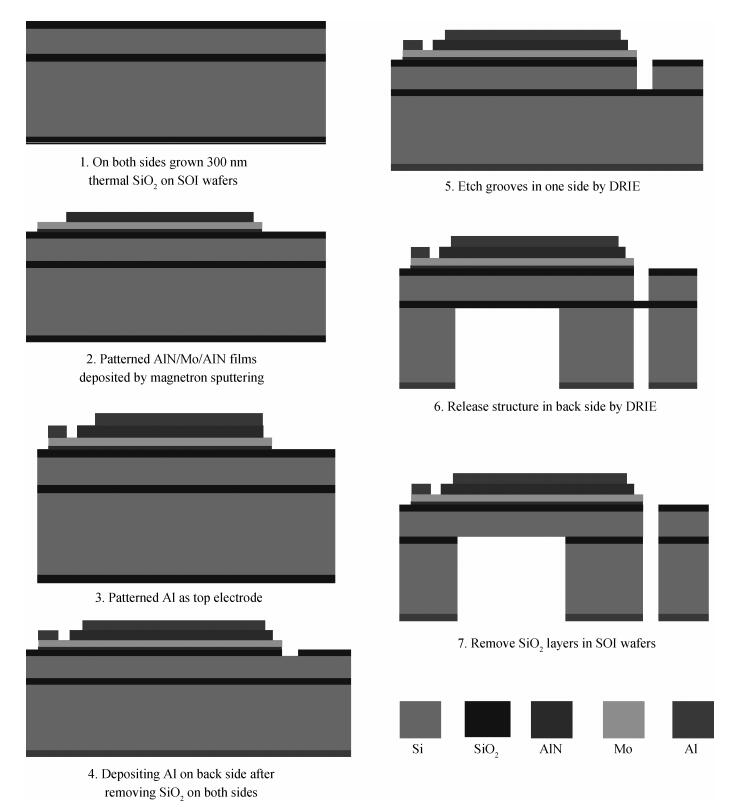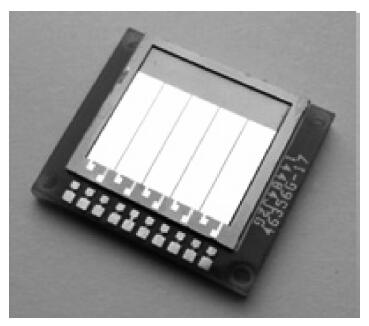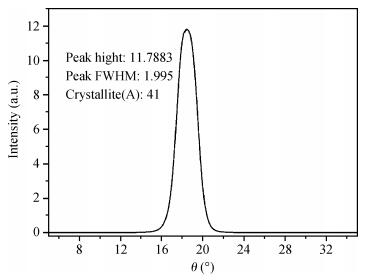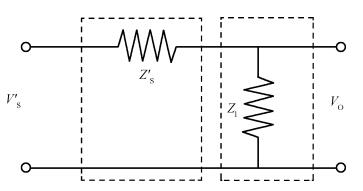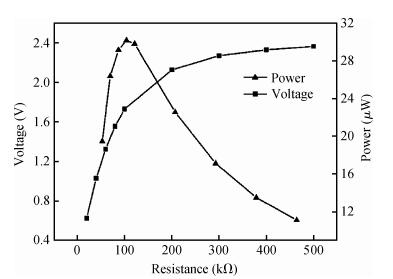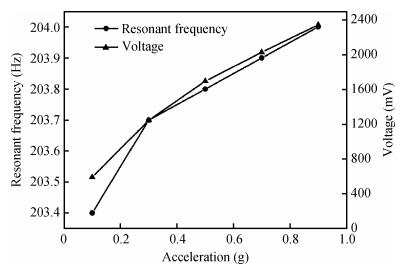| Citation: |
Zhengguo Shang, Dongling Li, Zhiyu Wen, Xingqiang Zhao. The fabrication of vibration energy harvester arrays based on AlN piezoelectric film[J]. Journal of Semiconductors, 2013, 34(11): 114013. doi: 10.1088/1674-4926/34/11/114013
****
Z G Shang, D L Li, Z Y Wen, X Q Zhao. The fabrication of vibration energy harvester arrays based on AlN piezoelectric film[J]. J. Semicond., 2013, 34(11): 114013. doi: 10.1088/1674-4926/34/11/114013.
|
The fabrication of vibration energy harvester arrays based on AlN piezoelectric film
DOI: 10.1088/1674-4926/34/11/114013
More Information
-
Abstract
The fabrication and measurement results of the vibration energy harvester arrays based on the piezoelectric aluminum nitride (AlN) film are presented. The structure design and fabrication process of the device are introduced. The key material, the AlN film with crystal orientation (002), was deposited by pulsed-DC magnetron sputtering and characterized by X-ray diffraction (XRD). The resonant frequency, power out, and the open circuit voltage of the device are detected. The optimized load of 80 kΩ and a remarkable maximum power out of 30.4 μW are obtained when the acceleration of 0.9g (g is standard gravity acceleration) is applied.-
Keywords:
- AlN,
- crystal orientation,
- harvester arrays,
- vibration energy
-
References
[1] Khaligh A, Zeng P, Zheng C. Kinetic energy harvesting using piezoelectric and electromagnetic technologies——state of the art. IEEE Trans Industrial Electron, 2010, 57(3):850 doi: 10.1109/TIE.2009.2024652[2] Lee B C, Rahman M A, Hyun S H, et al. Low frequency driven electromagnetic energy harvester for self-powered system. Smart Materials and Structures, 2012, 21(12):125024 doi: 10.1088/0964-1726/21/12/125024[3] Hampl S, Cimalla V, Polster T, et al. AlN-based piezoelectric bimorph microgenerator utilizing low-level non-resonant excitation. International Society for Optics and Photonics, 2011[4] Andosca R, McDonald T, Genova V, et al. Experimental and theoretical studies on MEMS piezoelectric vibrational energy harvesters with mass loading. Sensors and Actuators A:Physical, 2012[5] Elfrink R, Matova S, de Nooijer C, et al. Shock induced energy harvesting with a MEMS harvester for automotive applications. IEEE Electron Devices Meeting (IEDM), 2011[6] Bertacchini A, Scorcioni S, Dondi D, et al. AlN-based MEMS devices for vibrational energy harvesting applications. IEEE Solid-State Device Research Conference, 2011[7] Yu Yi, Ren Tianling, Liu Litian. Deposition and characterization of AlN thin films on silicon.Chinese Journal of Semiconductors, 2005, 26:42[8] Duggirala R, Polcawich R G, Dubey M, et al. Radioisotope thin-film fueled microfabricated reciprocating electromechanical power generator. J Microelectromechan Syst, 2008, 17(4):837 doi: 10.1109/JMEMS.2008.924854[9] Yen T T, Hirasawa T, Wright P K, et al. Corrugated aluminum nitride energy harvesters for high energy conversion effectiveness. J Micromechan Microeng, 2011, 21(8):085037 doi: 10.1088/0960-1317/21/8/085037[10] Marzencki M, Defosseux M, Basrour S. MEMS vibration energy harvesting devices with passive resonance frequency adaptation capability. J Microelectromechan Syst, 2009, 18(6):1444 doi: 10.1109/JMEMS.2009.2032784[11] Elfrink R, Pop V, Hohlfeld D, et al. First autonomous wireless sensor node powered by a vacuum-packaged piezoelectric. IEEE MEMS Energy Harvester, 2009[12] Elfrink R, Renaud M, Kamel T, et al. Vacuum-packaged piezoelectric vibration energy harvesters:damping contributions and autonomy for a wireless sensor system. J Micromechan Microeng, 2010, 20:104001 doi: 10.1088/0960-1317/20/10/104001[13] Elfrink R, Kamel T, Goedbloed M, et al. Vibration energy harvesting with aluminum nitride-based piezoelectric devices. J Micromechan Microeng, 2009, 19:094005 doi: 10.1088/0960-1317/19/9/094005[14] Van Schaijk R, Elfrink R, Kamel T, et al. Piezoelectric AlN energy harvesters for wireless autonomous transducer solutions. IEEE Sensors, 2008[15] Defosseux M, Allain M, Defay E, et al. Highly efficient piezoelectric micro harvester for low level of acceleration fabricated with a CMOS compatible process. Sensors and Actuators A:Physical, 2012, 188:489 doi: 10.1016/j.sna.2012.07.002[16] Hosaka H, Itao K, Kuroda S. Damping characteristics of beam-shaped micro-oscillators. Sensors and Actuators A:Physical, 1995, 49(1):87[17] Lien I, Shu Y. Array of piezoelectric energy harvesting by the equivalent impedance approach. Smart Materials and Structures, 2012, 21(8):082001 doi: 10.1088/0964-1726/21/8/082001[18] Marzencki M, Basrour S, Charlot B. Design, modelling and optimisation of integrated piezoelectric micro power generator. Modeling and Simulation of MEMS, 2005[19] Giordano C, Ingrosso I, Todaro M, et al. AlN on polysilicon piezoelectric cantilevers for sensors/actuators. Microelectron Eng, 2009, 86(4-6):1204 doi: 10.1016/j.mee.2008.12.075 -
Proportional views





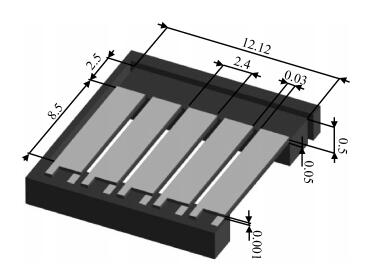
 DownLoad:
DownLoad:
